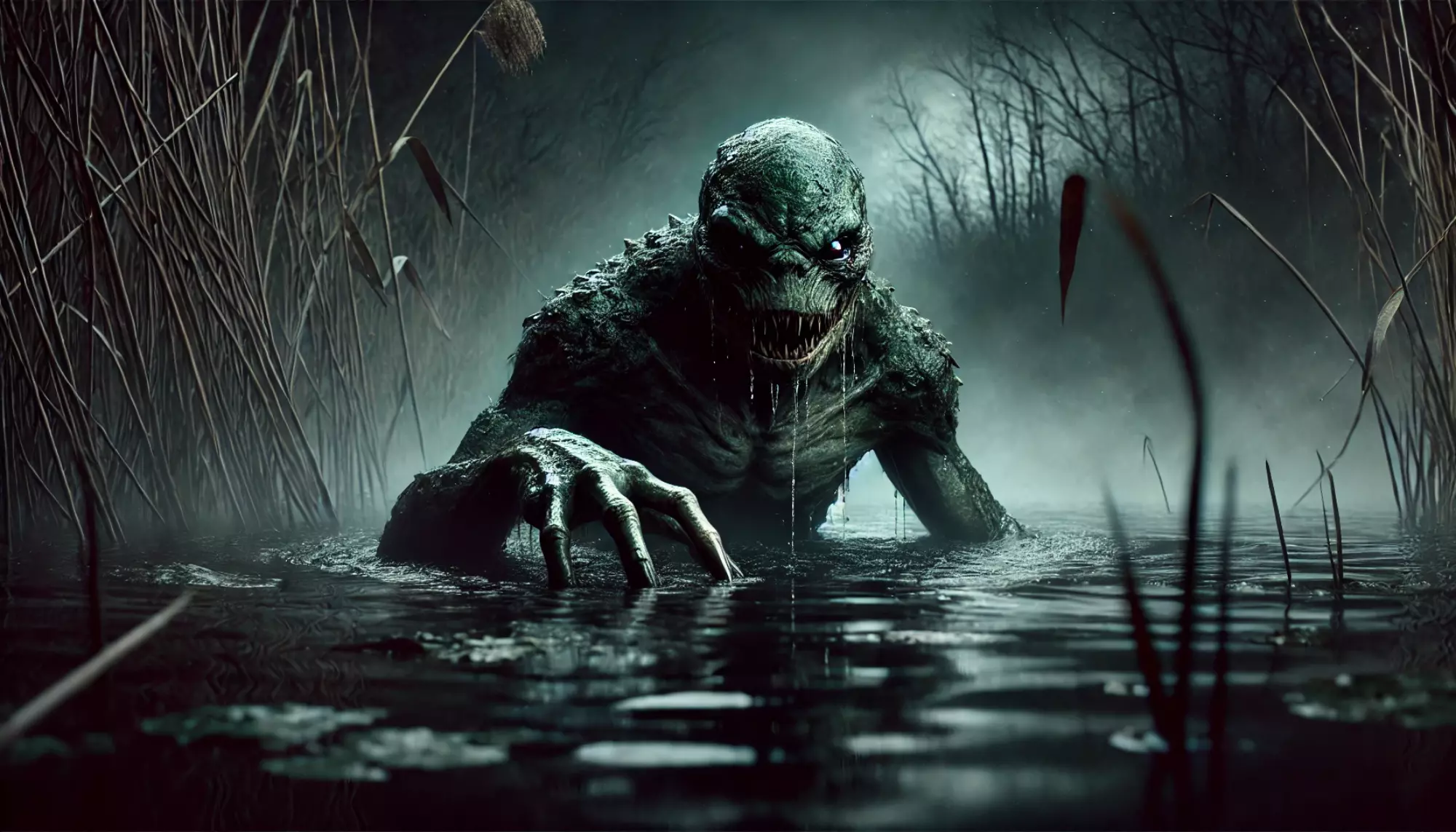Introduction
The Vodyanoy, a formidable figure from Slavic folklore, embodies the mystery and raw power of nature’s waters. Known for dwelling in rivers, lakes, and ponds, this creature warns against human carelessness in nature’s domain. Respected and feared, the Vodyanoy has long symbolized the spirit of water itself, reminding those who encounter it that nature deserves reverence. Often depicted as a frog-like being with a greenish, mossy appearance, the Vodyanoy’s tales serve as cautionary reminders of the dangers lurking beneath the surface.
History/Origin
The Vodyanoy’s roots trace back centuries, emerging from the depths of Eastern European and Slavic cultures. In medieval times, villagers and townsfolk believed the creature safeguarded bodies of water, from rivers to secluded ponds. The Vodyanoy’s myth likely began as a means of explaining drownings or mysterious water-related accidents. Farmers and fishermen believed the Vodyanoy required respect, sacrifices, and an acknowledgment of its authority. Over time, it became a central figure in Slavic folklore, representing both the beauty and danger of wild waters.
Name Meaning
The name “Vodyanoy” derives from the Slavic word “voda,” meaning water. True to its name, the Vodyanoy is inseparably tied to aquatic environments, from rivers to murky ponds. Known by various names across Slavic-speaking regions, it’s also called “Vodník” in Czech lore and “Vodník Vodník” in Russian and Ukrainian stories. These names emphasize the Vodyanoy’s watery essence and role as a guardian of the fluid realms.
Appearance
The Vodyanoy’s appearance varies widely across Slavic and Eastern European cultures, embodying different characteristics depending on the region and the specific tales in which it appears. Known for its connection to water, this enigmatic creature takes on forms that reflect the mysterious, sometimes dangerous allure of rivers, lakes, and ponds. Across various cultures, at least four prominent descriptions emerge.
The Russian Vodyanoy: The Pot-Bellied Old Man
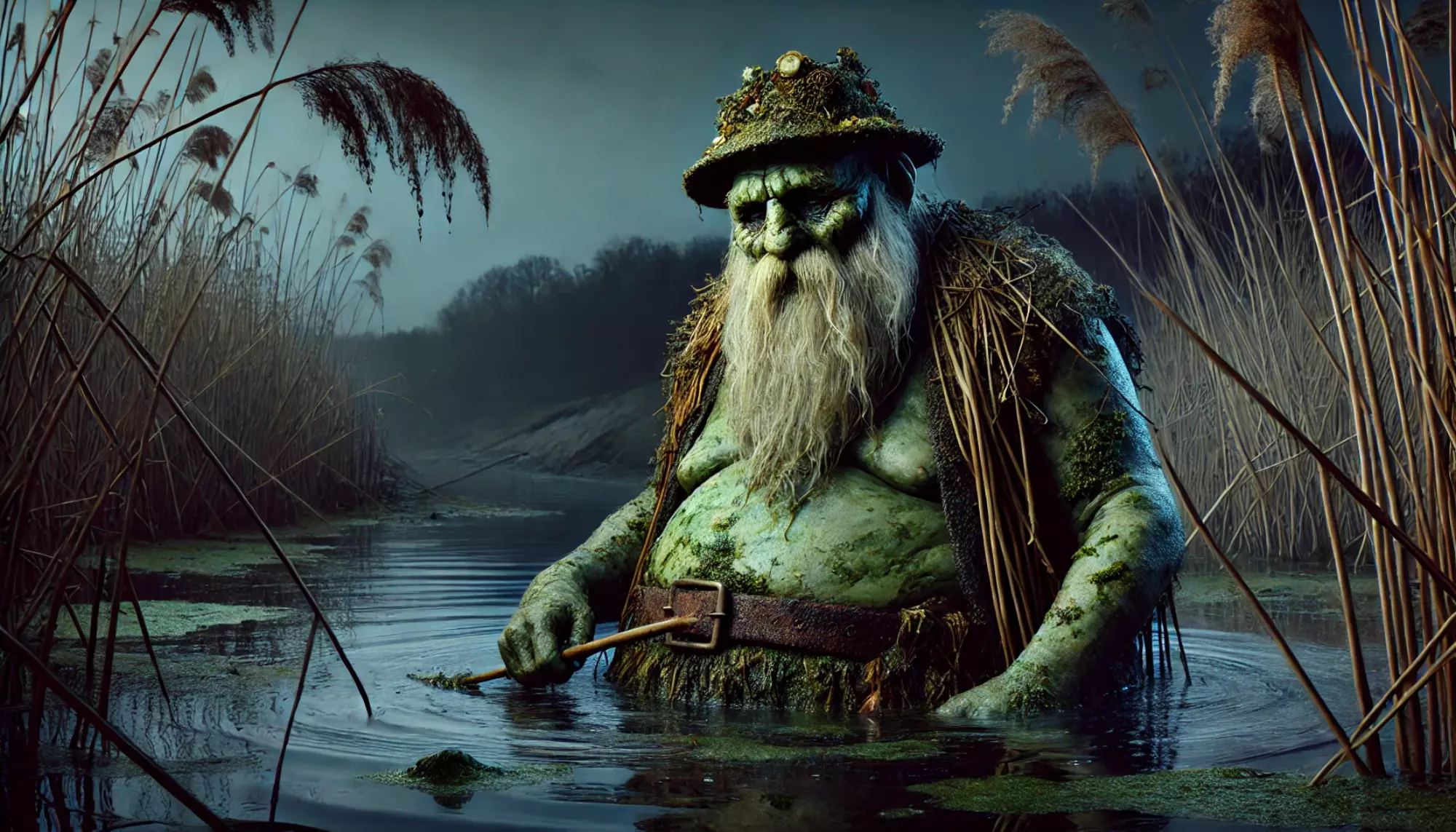
In Russian folklore, the Vodyanoy often appears as an old, bald-headed man with a large pot belly. His skin is a sickly greenish hue, almost translucent, resembling that of a fish, and his body is often covered in algae, mud, and reeds from the depths of the rivers he inhabits. He wears a makeshift hat and belt woven from reeds and rushes, accentuating his connection to the watery realm. In this form, the Vodyanoy is known to emerge from the water at night, his slimy green beard dripping with water as he combs his hair on the shore. His pale eyes and haunting gaze strike fear into those who encounter him, as he often looks for careless swimmers to drag into the depths.
The Czech Vodník: The Fisherman’s Foe
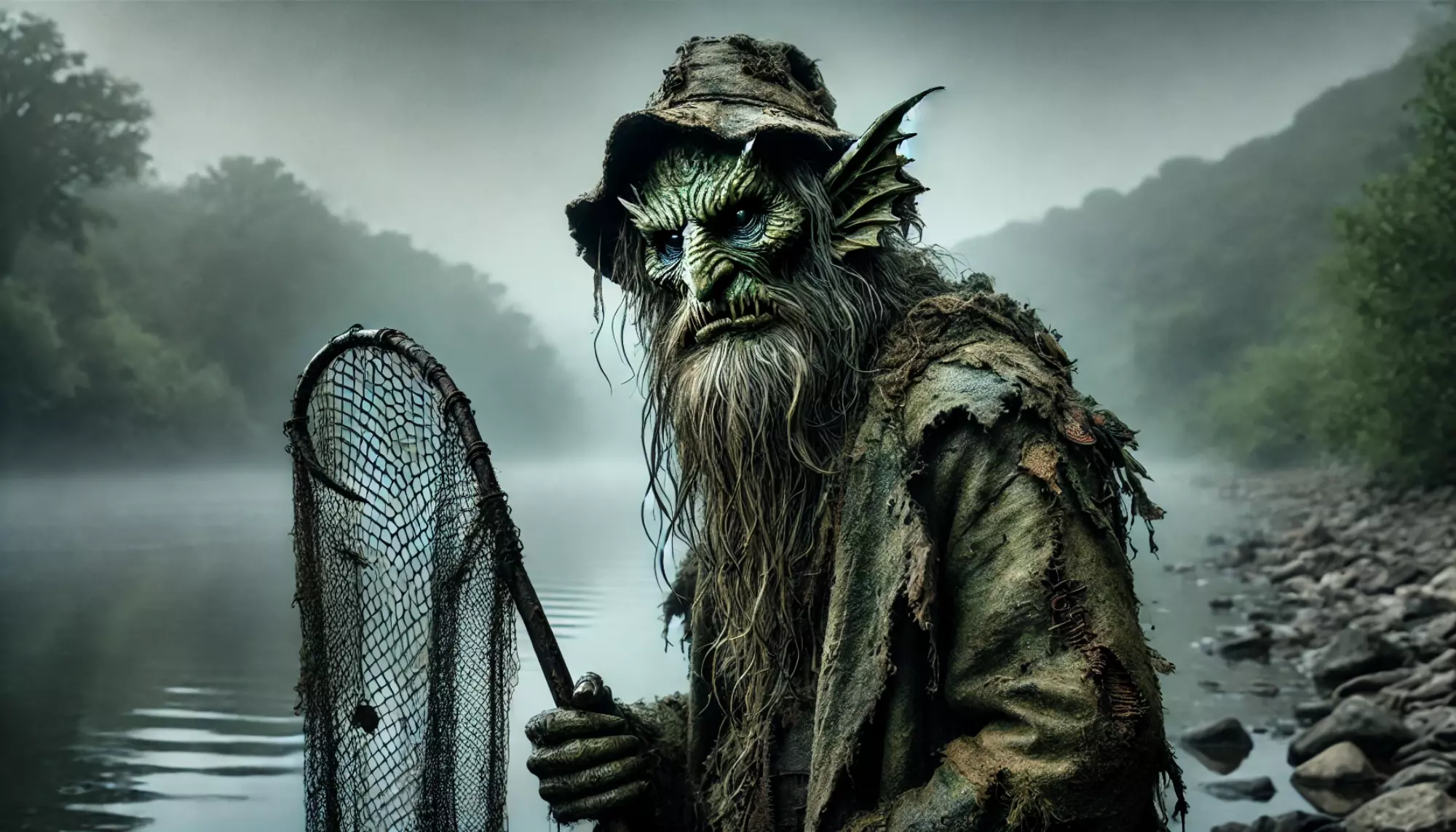
In Czech legends, the Vodyanoy, known locally as the Vodník, takes on a less monstrous, more human-like form. The Vodník is typically depicted as a man dressed in old-fashioned, tattered clothes—often with a green coat, waterlogged hat, and long, damp beard. His face is a pallid green, and he has sharp, almost animalistic features. The Vodník carries a distinctive fishing net, symbolizing his habit of capturing the souls of those who drown in his waters. In this form, he is considered a trickster, luring people closer to the water’s edge with promises of riches or fish, only to ensnare them in his net. This version of the Vodyanoy is less violent, instead reveling in tormenting fishermen by tangling their nets or sabotaging their boats.
The Serbian Vodenjak: The Mystical Shape-Shifter
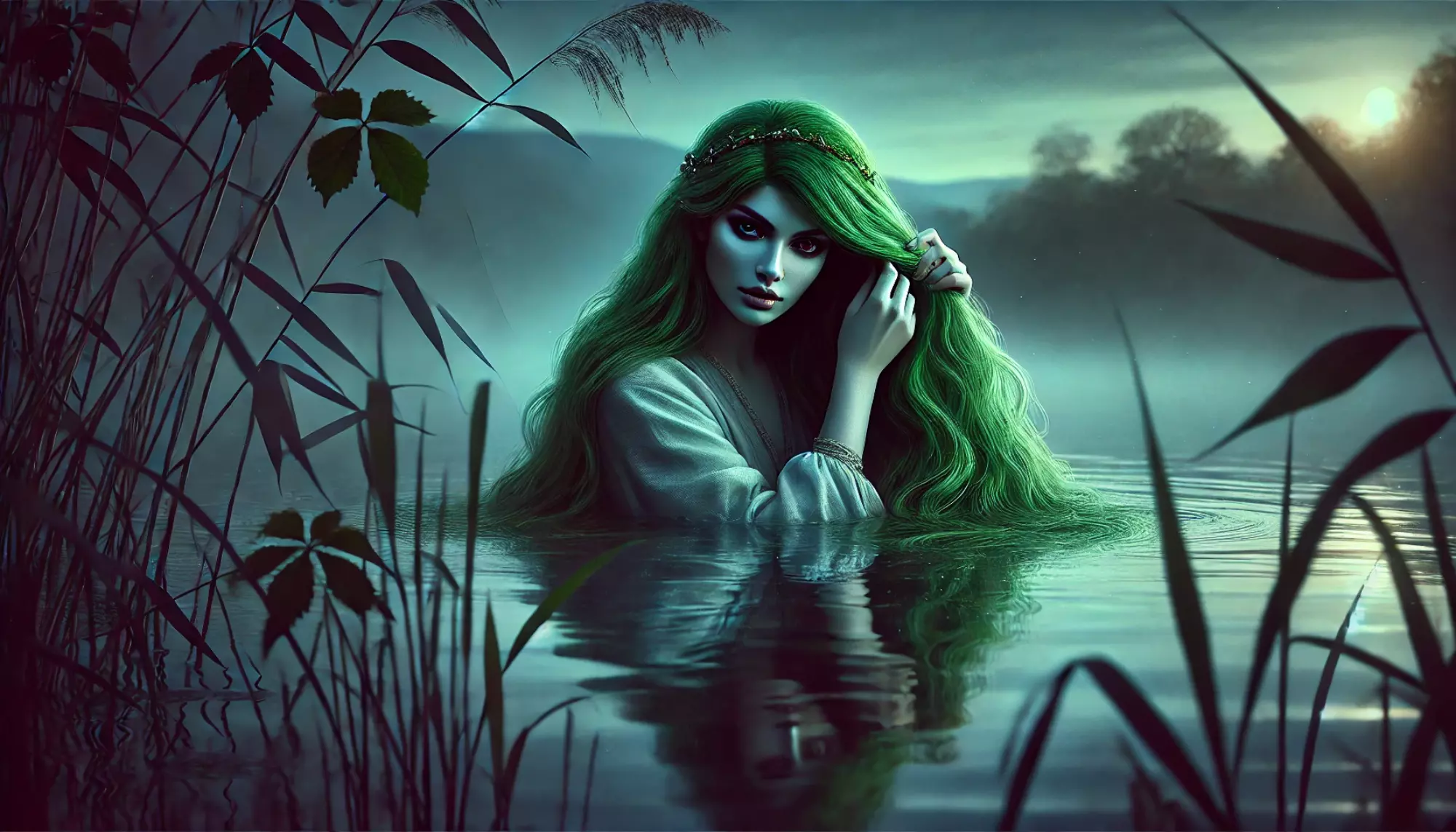
In Serbian folklore, the Vodyanoy, called the Vodenjak, possesses a more mystical aspect. He is a powerful shape-shifter, able to assume various forms depending on his needs. At times, he appears as a naked man with long green hair and deep, dark eyes. Other times, he takes the form of a beautiful woman combing her hair by the riverbank, luring men with her enchanting beauty. This form of the Vodenjak represents the seductive and deadly aspect of water, where beauty hides danger. He can also appear as an animal, such as a fish or a frog, blending seamlessly into the aquatic environment. This ability to change form speaks to the elusive and unpredictable nature of water, which can be both life-giving and treacherous.
The Polish Wodnik: The Swamp Dweller
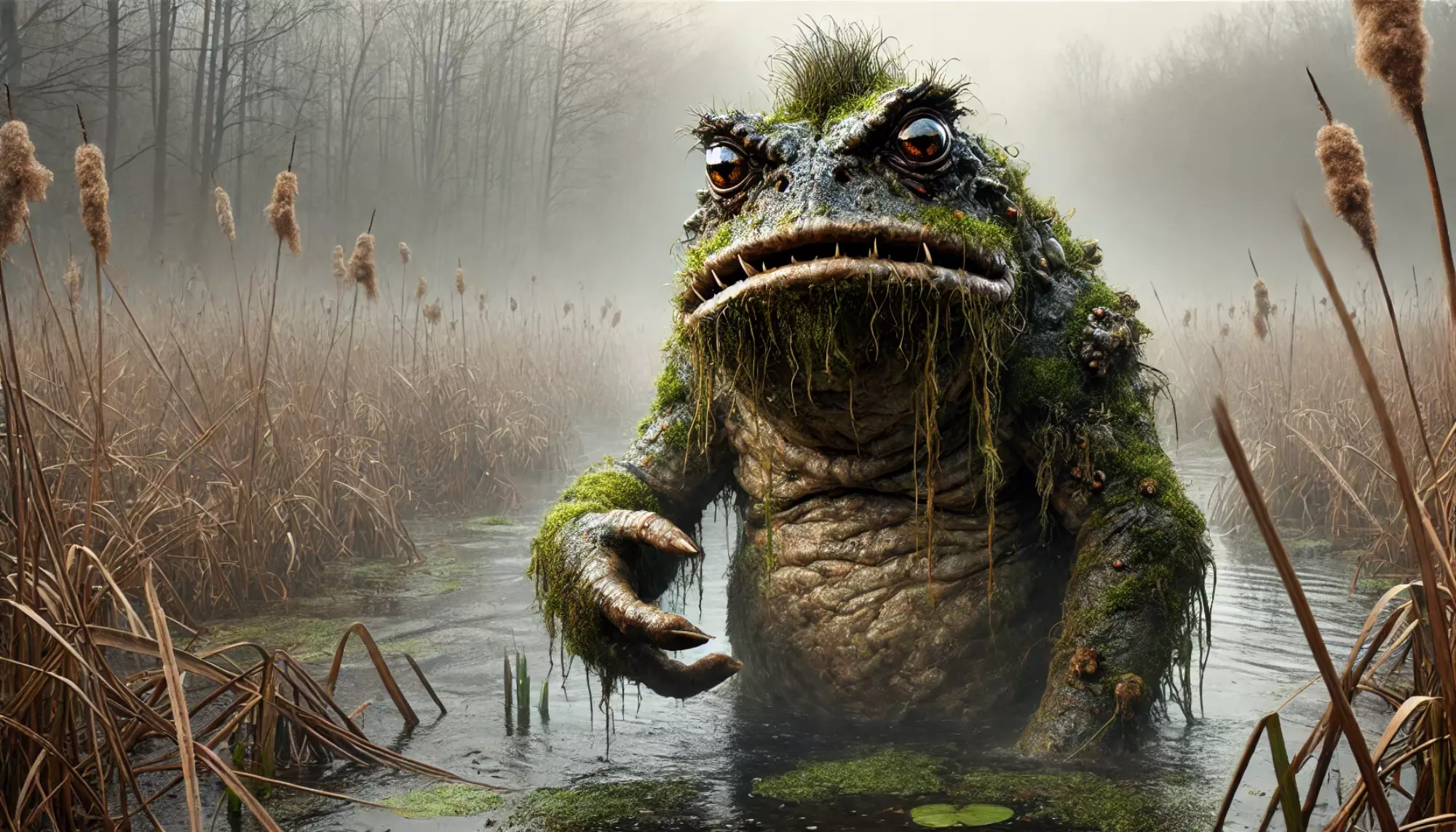
In Poland, the Vodyanoy, or Wodnik, is often imagined as a creature born of the swamp, embodying the murky, mysterious qualities of stagnant water. This version of the Wodnik is more monstrous than the others, resembling a grotesque hybrid between man and amphibian. His skin is rough, covered in scales, and he has webbed hands and feet. His body is often bloated, waterlogged, with tufts of marsh plants and moss growing on his skin. His face is haunting, with bulbous, fish-like eyes and a wide, frog-like mouth. The Polish Wodnik is said to be fiercely territorial, attacking anyone who intrudes on his domain. He’s known to lurk in swamps and marshes, emerging only when he senses a threat to his waters.
The Ukrainian Vodianyk: Guardian of the Waters
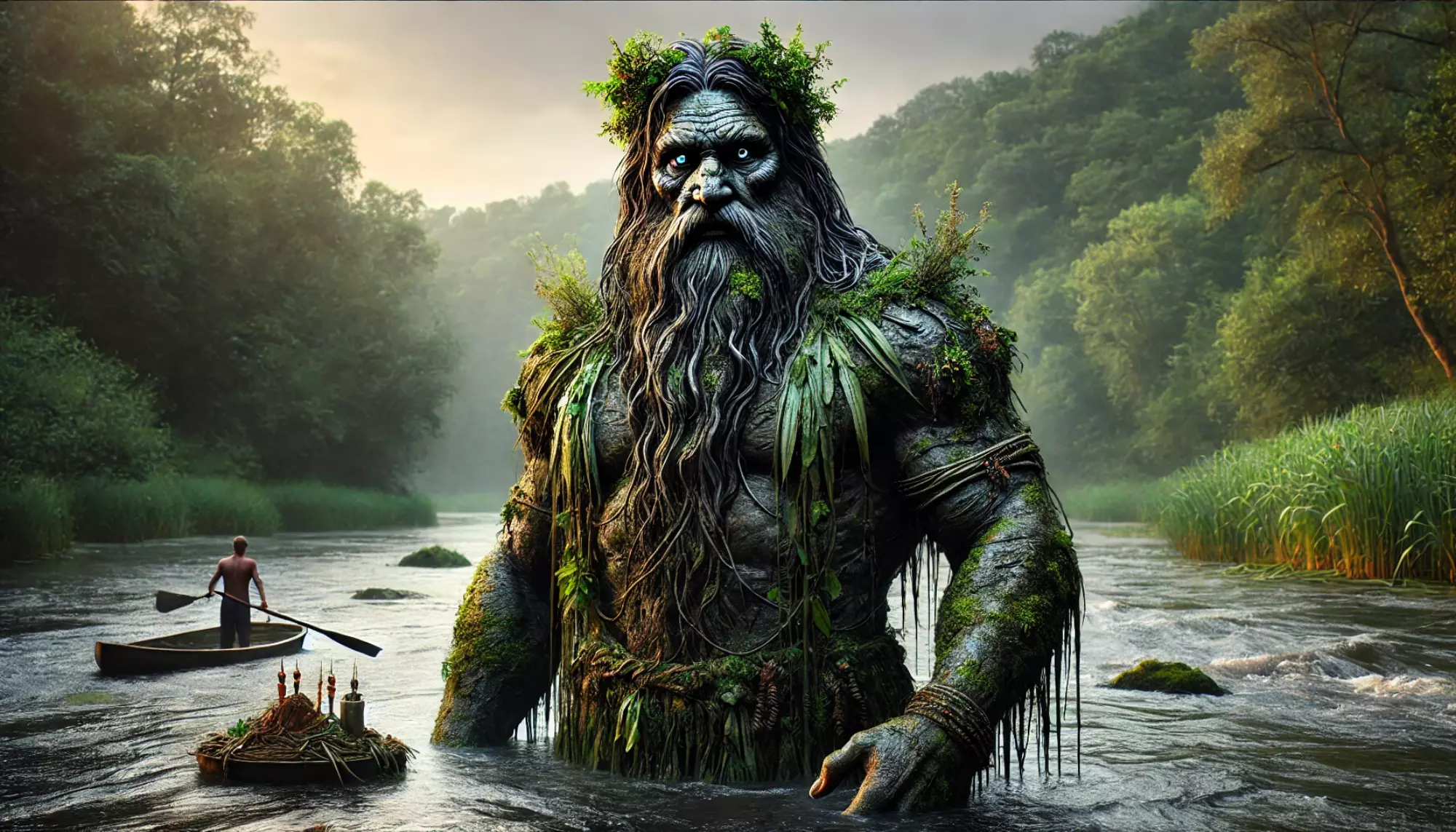
In Ukraine, the Vodyanoy, or Vodianyk, is considered a more ancient, guardian-like figure who, despite his menacing appearance, plays a protective role over the natural waters. This version appears as a towering figure, his body wrapped in dark river plants, and his skin is covered with a layer of muddy silt. His beard and hair are streaked with green from river algae, and his eyes are intense, shining like the surface of a river at twilight. Although the Vodianyk’s appearance is fearsome, he is not necessarily malicious. Instead, he serves as a custodian of the rivers, punishing those who disrespect the water or attempt to drain it. Fishermen in Ukraine might leave offerings to appease him, acknowledging his role as a fierce protector of the ecosystem.
These varying depictions reflect the Vodyanoy’s complex nature across Slavic cultures, illustrating the creature’s dual role as both a feared predator and a respected guardian of water. The different forms highlight the cultural values and fears tied to water bodies, embodying both the nurturing and destructive aspects of the aquatic world.
Background Story
A tale as ancient as it is chilling recounts a miller who failed to show respect to the Vodyanoy by polluting the river. Enraged, the Vodyanoy unleashed a storm, flooding the mill and dragging the miller to his doom. In other stories, the Vodyanoy sits by the riverbank, tempting travelers with shiny objects in the water, only to pull them in when they lean too close. Some myths even describe how the Vodyanoy keeps the souls of drowned people in pots at the bottom of the river, a warning to anyone who dares ignore the power of nature.
“Respect the water and leave it pure,” an old villager once warned, “lest the Vodyanoy drag you under.” Through its tales, the Vodyanoy embodies the wrath and mystery of wild, untamed nature.
Cultural Impact
In Slavic culture, the Vodyanoy is more than a myth; it’s a moral compass and a guardian of nature. Its stories teach respect for the environment and caution against exploiting natural resources. Fishermen often poured a libation into the water before casting their nets, hoping to appease the Vodyanoy and avoid its wrath. Over time, the Vodyanoy’s legend spread across Eastern Europe, becoming part of folk songs, art, and even festival celebrations where people honored water spirits. Today, the Vodyanoy remains a symbol of respect for nature, warning against pollution and recklessness.
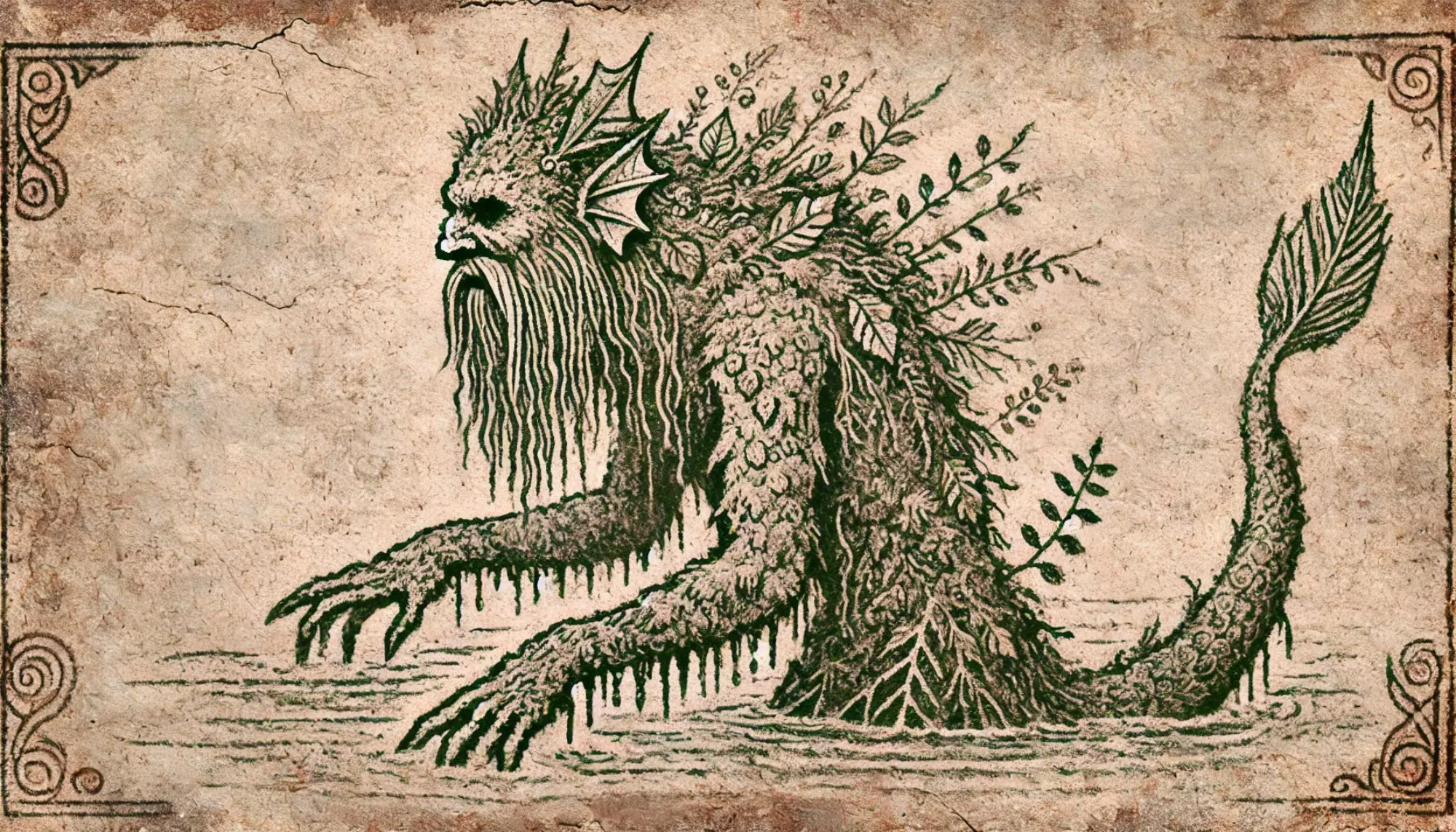
Similar Beasts
Many cultures around the world have their versions of water spirits. In Japan, the Kappa is a river-dwelling creature that lures humans into the water, similar to the Vodyanoy. The Scottish Kelpie also dwells in lakes and rivers, often appearing as a beautiful horse before dragging victims to a watery grave. Even the Greek Naiads, while less malevolent, share a kinship with the Vodyanoy as spirits tied to water bodies, reminding people of the ever-present power and mystery of the aquatic world.
Religion/Ritual
In Slavic spiritual practices, the Vodyanoy holds a significant role as a revered water spirit. Many communities viewed it as both protector and potential adversary. Rituals to appease the Vodyanoy often included offerings, such as bread, flowers, or coins, thrown into the river. Festivals sometimes honored water spirits with songs and dances, expressing both respect and fear. Shamans or spiritual leaders would occasionally conduct ceremonies on riverbanks, especially if a drowning had occurred, to prevent the Vodyanoy from growing restless or angry.
Scientific or Rational Explanations
The Vodyanoy myth may stem from early attempts to explain the risks associated with bodies of water. Before modern science provided insights into underwater currents and hypothermia, drownings often seemed mysterious. Cold, fast-moving waters and sudden depth changes in rivers could easily lead to fatalities, especially for those unfamiliar with the waters. The Vodyanoy became a way to personify these dangers, turning natural hazards into stories that reinforced the need for caution and respect near water.
Modern Cultural References
Literature: Evenings on a Farm Near Dikanka by Nikolai Gogol: In this collection, the Vodyanoy is portrayed as a malevolent water spirit that terrorizes villagers.
Music: Night on Bald Mountain by Modest Mussorgsky: This musical piece features the Vodyanoy as one of the evil spirits summoned by the devil.
Video Games: The Witcher 3: Wild Hunt: The Vodyanoy is portrayed as a powerful water creature that guards a treasure.
Film: The Mermaid: Lake of the Dead (2018): This Russian horror movie features the Vodyanoy as a malevolent water spirit that haunts a lake and preys on unsuspecting victims.
Conclusion
The Vodyanoy’s tales endure because they remind us of nature’s undeniable power and mystery. Even today, as we navigate modern landscapes, the Vodyanoy’s presence looms in folklore and art, urging caution and reverence for water. This myth embodies more than a creature of folklore—it serves as a timeless warning of nature’s might. Slavic cultures understood that those who respect nature’s spirit would be safe, while the reckless faced consequences. In the Vodyanoy, we find a reflection of humanity’s timeless awe for the wild forces we have yet to conquer.


